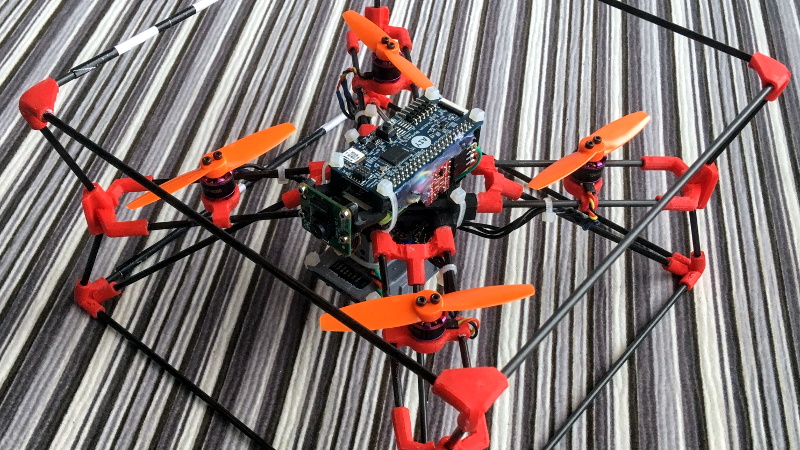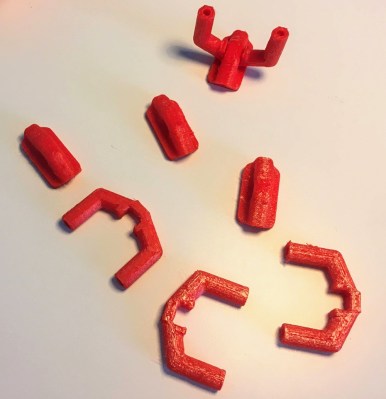Resilient AI Drone Packs it all in Under 250 Grams

When it was first announced that limits would be placed on recreational RC aircraft heavier than 250 grams, many assumed the new rules meant an end to home built quadcopters. But manufacturers rose to the challenge, and started developing incredibly small and lightweight versions of their hardware. Today, building and flying ultra-lightweight quadcopters with first person view (FPV) cameras has become a dedicated hobby onto itself.
But as impressive as those featherweight flyers might be, the CogniFly Project is really pushing what we thought was possible in this weight class. Designed as a platform for experimenting with artificially intelligent drones, this open source quadcopter is packing a Raspberry Pi Zero and Google’s AIY Vision Kit so it can perform computationally complex tasks such as image recognition while airborne. In case any of those experiments take an unexpected turn, it’s also been enclosed in a unique flexible frame that makes it exceptionally resilient to crash damage. As you can see in the video after the break, even after flying directly into a wall, the CogniFly can continue on its way as if nothing ever happened.
With the help of a level shifter, the Raspberry Pi can communicate directly with the quadcopter’s flight controller over UART. A Python library developed by the CogniFly team allows the Pi to give commands to the flight controller using MSP (MultiWii Serial Protocol), which when combined with the other onboard sensors to detect altitude and relative motion, means there’s little left for a human pilot to do.

The CogniFly is wrapped up in a unique frame that not only protects all of its high-tech gear, but makes sure the spinning propellers are kept far enough away from the edges that they won’t hit anything (or anyone) in a crash. Rather than make it out of something entirely rigid, the team came up with a clever construction technique that combines flexible TPU connectors with carbon fiber rods.
The TPU pieces can be printed flat on an inexpensive 3D printer, and then folded into position for assembly. Should any of the frame components break in a particularly energetic impact, it can be quickly and easily repaired in the field with a small stock of spare parts.
Looking ahead, the team has designed the frame in such a way that the CogniFly will be able to land on a rotary battery changer when it needs a fresh pack. There’s not a whole lot of prior art for automatic battery swaps in the hacker and maker ecosystem, and given how ambitious their concept is, we’re very interested to see how this element of the project progresses.
The CogniFly is a particularly compelling platform for anyone looking to experiment with autonomous flying, and the fact that it’s light enough to sidestep most drone laws is huge for the hobbyist crowd. You might think that by 2021 we’d already seen every kind of quadcopter imaginable, but occasionally new designs still pop up that prove there’s still plenty of room for innovation.
Post a Comment